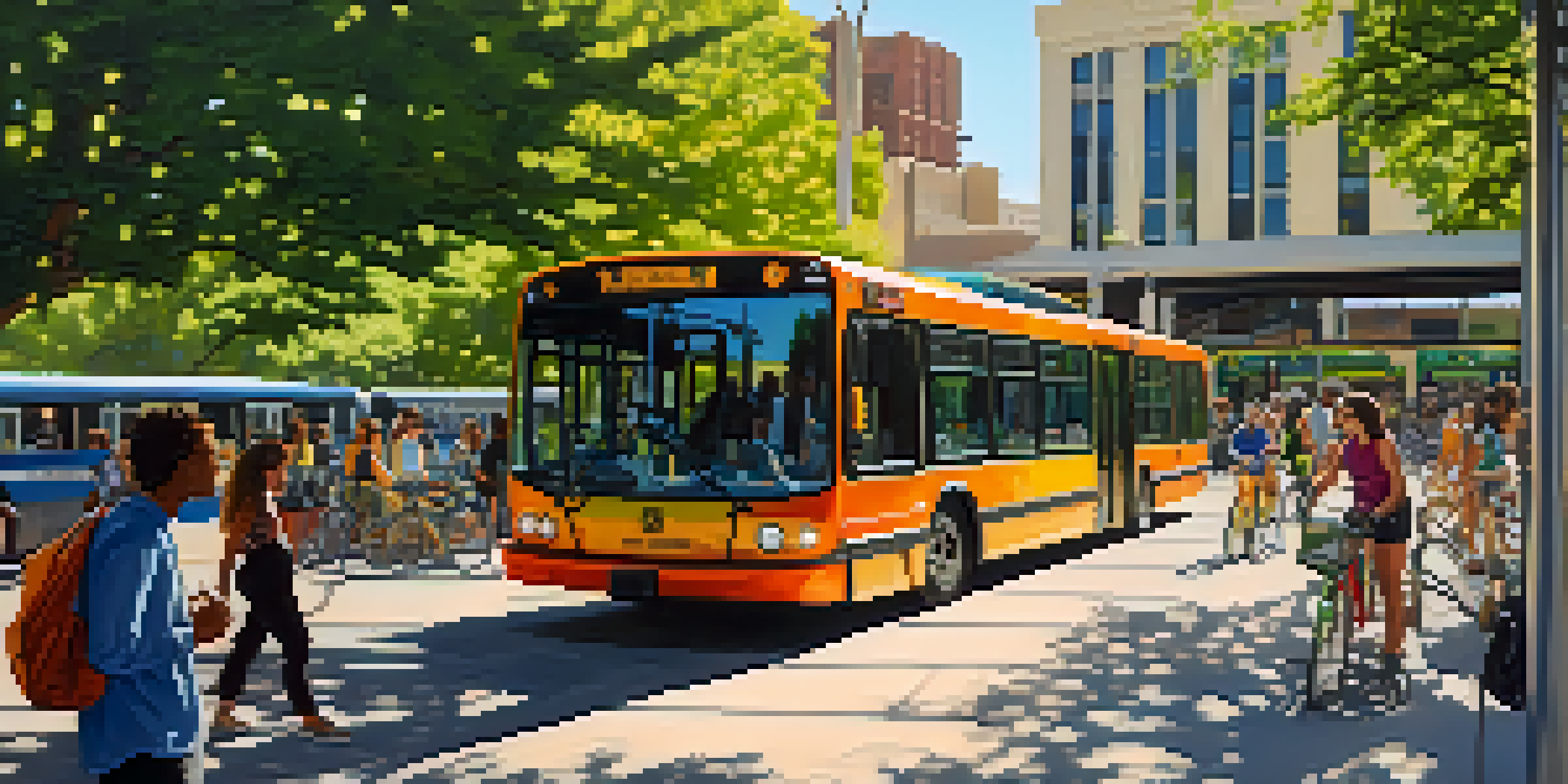Impact of Public Transportation on Austin's Urban Development

Austin's Public Transportation Landscape: A Brief Overview
Austin's public transportation system has evolved significantly over the years, reflecting the city's rapid growth. With the introduction of services like Capital Metro, the city aims to provide convenient options for residents and visitors alike. This not only eases congestion but also promotes a more sustainable urban environment. Understanding this backdrop is essential to appreciate the impact of these services on urban development.
The Connection Between Public Transit and Urban Growth
Public transportation plays a crucial role in shaping urban landscapes, and Austin is no exception. Efficient transit options encourage higher density development around transit hubs, leading to vibrant mixed-use neighborhoods. This phenomenon can be seen in areas like the Mueller development, where proximity to transit has attracted businesses and residents alike. As more people rely on public transit, cities can reduce their carbon footprint and promote smarter growth.
Public Transit Fuels Urban Growth
Austin's public transportation system encourages higher density development, leading to vibrant neighborhoods around transit hubs.
Economic Benefits of an Expanding Public Transit System
Investing in public transportation has tangible economic benefits for Austin. Improved transit options can increase property values in surrounding areas, leading to higher tax revenues for the city. Additionally, better access to jobs via public transit can attract a diverse workforce, further stimulating the local economy. This ripple effect emphasizes the importance of robust public transportation in fostering economic vitality.
Environmental Impact: Reducing Carbon Footprint
Public transportation plays a vital role in addressing environmental concerns in urban settings. By providing alternatives to single-occupancy vehicles, public transit helps reduce greenhouse gas emissions. In a city like Austin, where traffic congestion can be a significant issue, efficient transit systems contribute to cleaner air and less pollution. Embracing public transportation is a step towards a sustainable future.
Economic Boost from Transit Investment
Enhancing public transit options increases property values and attracts a diverse workforce, stimulating Austin's economy.
Social Equity and Accessibility in Urban Development
A well-designed public transportation system promotes social equity by providing mobility options for all residents. In Austin, ensuring access to public transit for low-income communities can help bridge the gap between different socio-economic groups. This inclusiveness fosters a sense of community and enhances the overall quality of life. As Austin grows, prioritizing equitable transit solutions is essential for sustainable urban development.
Challenges Facing Public Transportation in Austin
Despite its benefits, Austin's public transportation system faces several challenges. Funding constraints can limit the expansion and improvement of services, leading to gaps in coverage. Additionally, public perception of transit can sometimes be negative, with misconceptions about safety and reliability. Addressing these challenges is crucial for ensuring that public transportation can effectively support Austin's urban development.
Sustainability Through Public Transit
By reducing reliance on single-occupancy vehicles, public transportation helps lower greenhouse gas emissions and promotes cleaner air.
Future Trends in Austin's Public Transportation
Looking ahead, Austin's public transportation landscape is set to evolve with emerging technologies. Innovations like autonomous vehicles and improved transit apps could enhance convenience and efficiency. Moreover, a growing emphasis on multimodal transportation options is likely to shape future developments. By staying ahead of these trends, Austin can create a more integrated and user-friendly transportation system.
Conclusion: The Path Forward for Austin's Urban Development
In conclusion, public transportation is more than just a means of getting from point A to B; it is a key driver of urban development in Austin. By investing in and improving transit options, the city can shape a sustainable, equitable, and economically vibrant future. Collaboration between policymakers, community members, and transit authorities will be crucial in this endeavor. As Austin continues to grow, a strong public transportation system will be integral to its success.